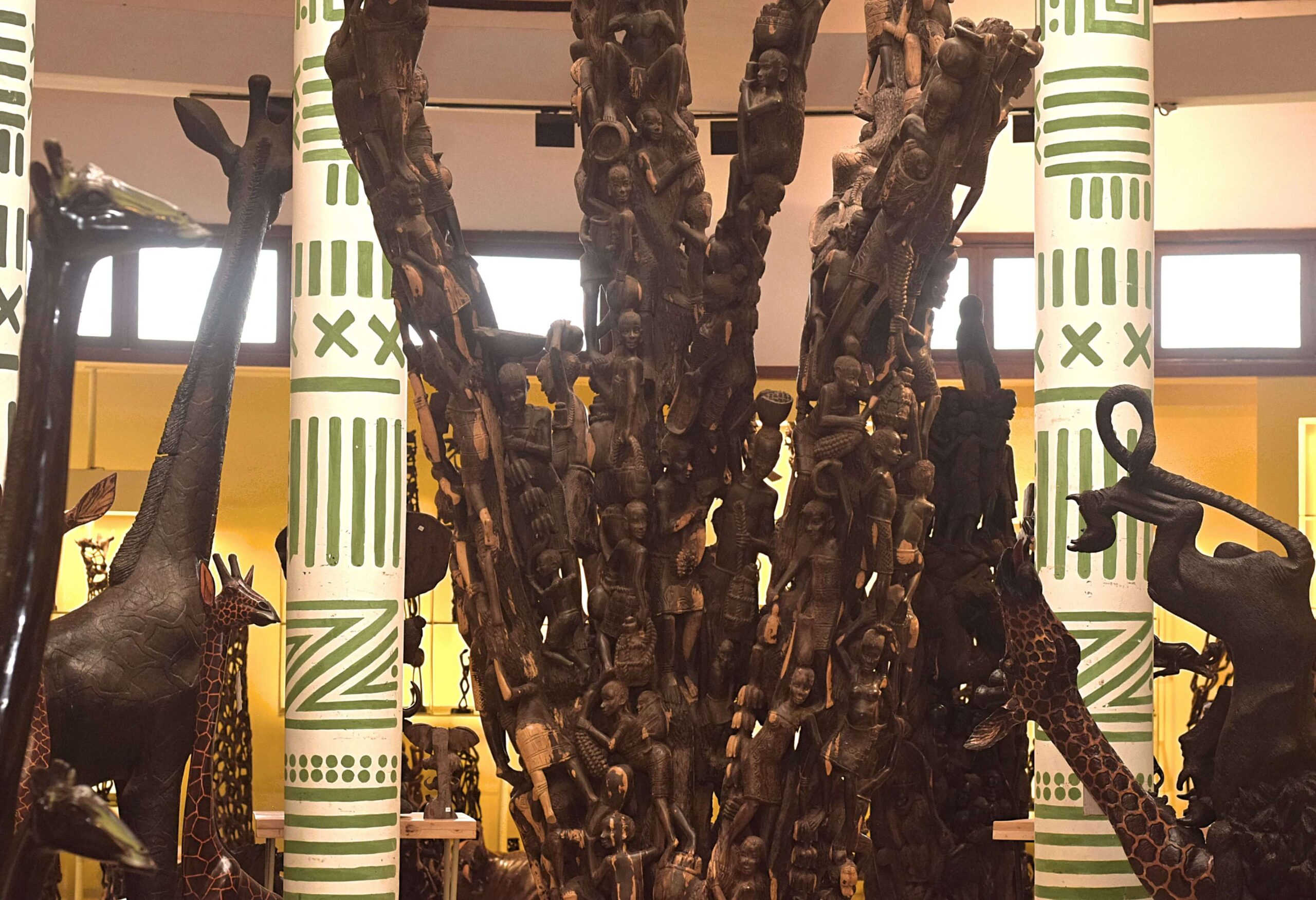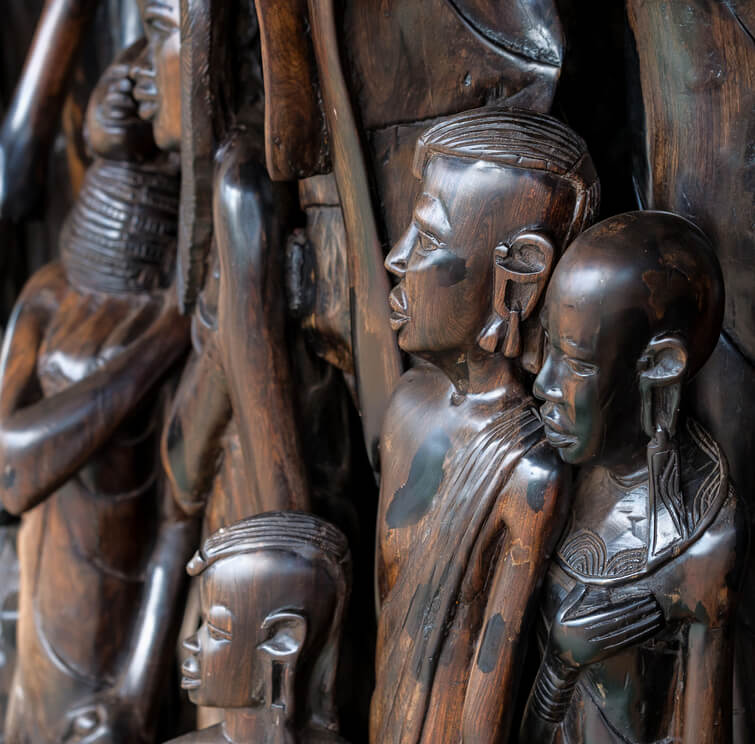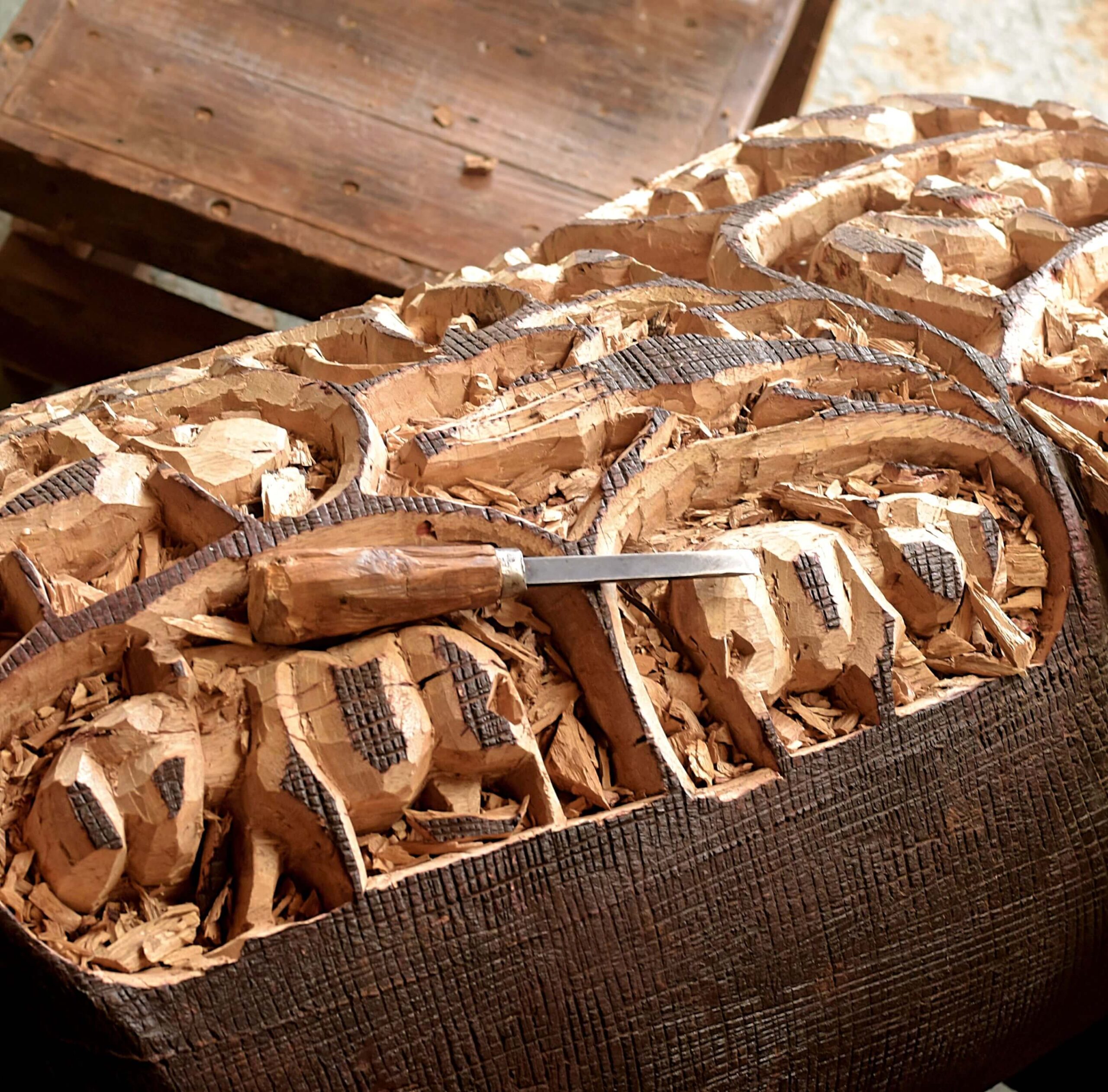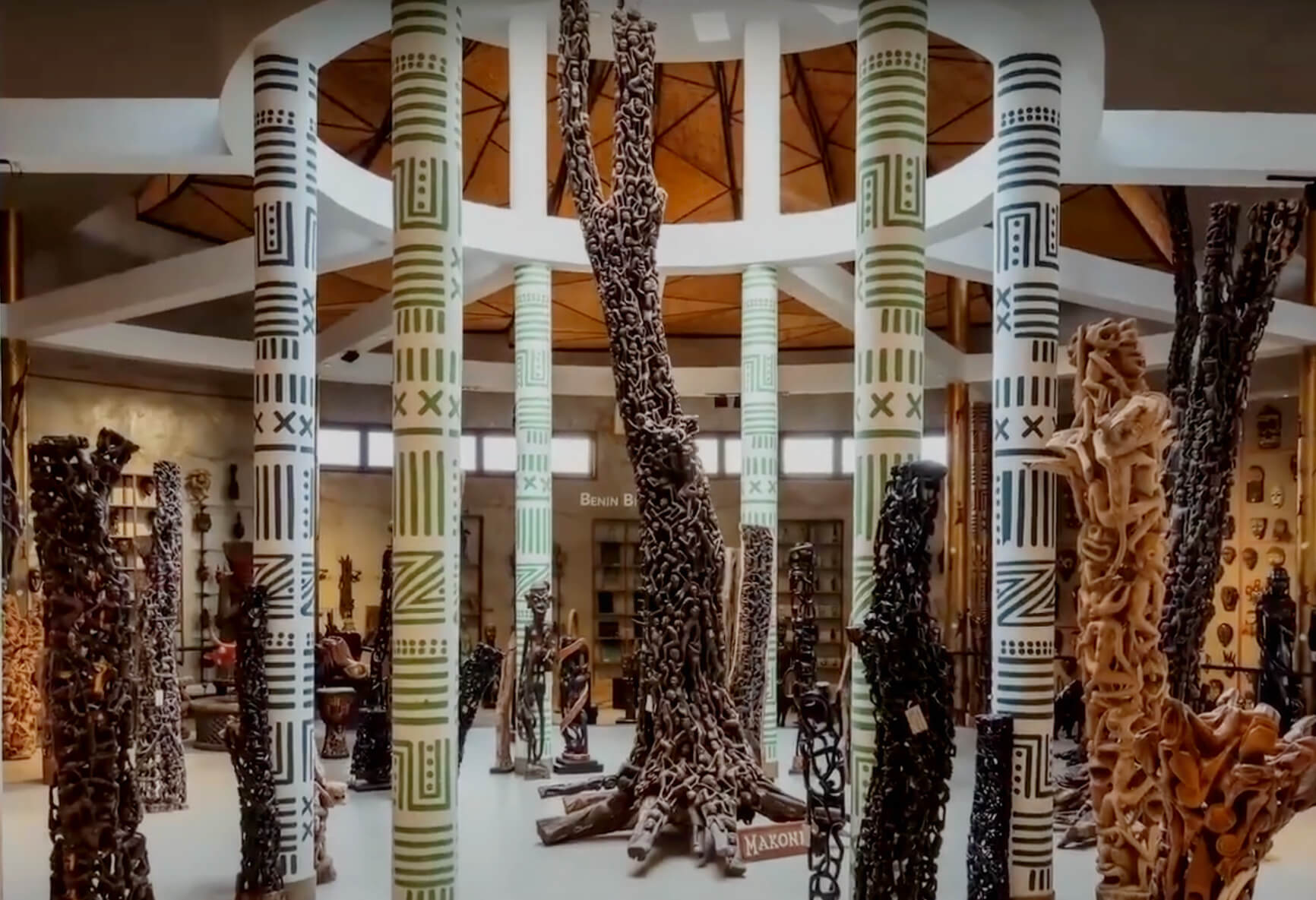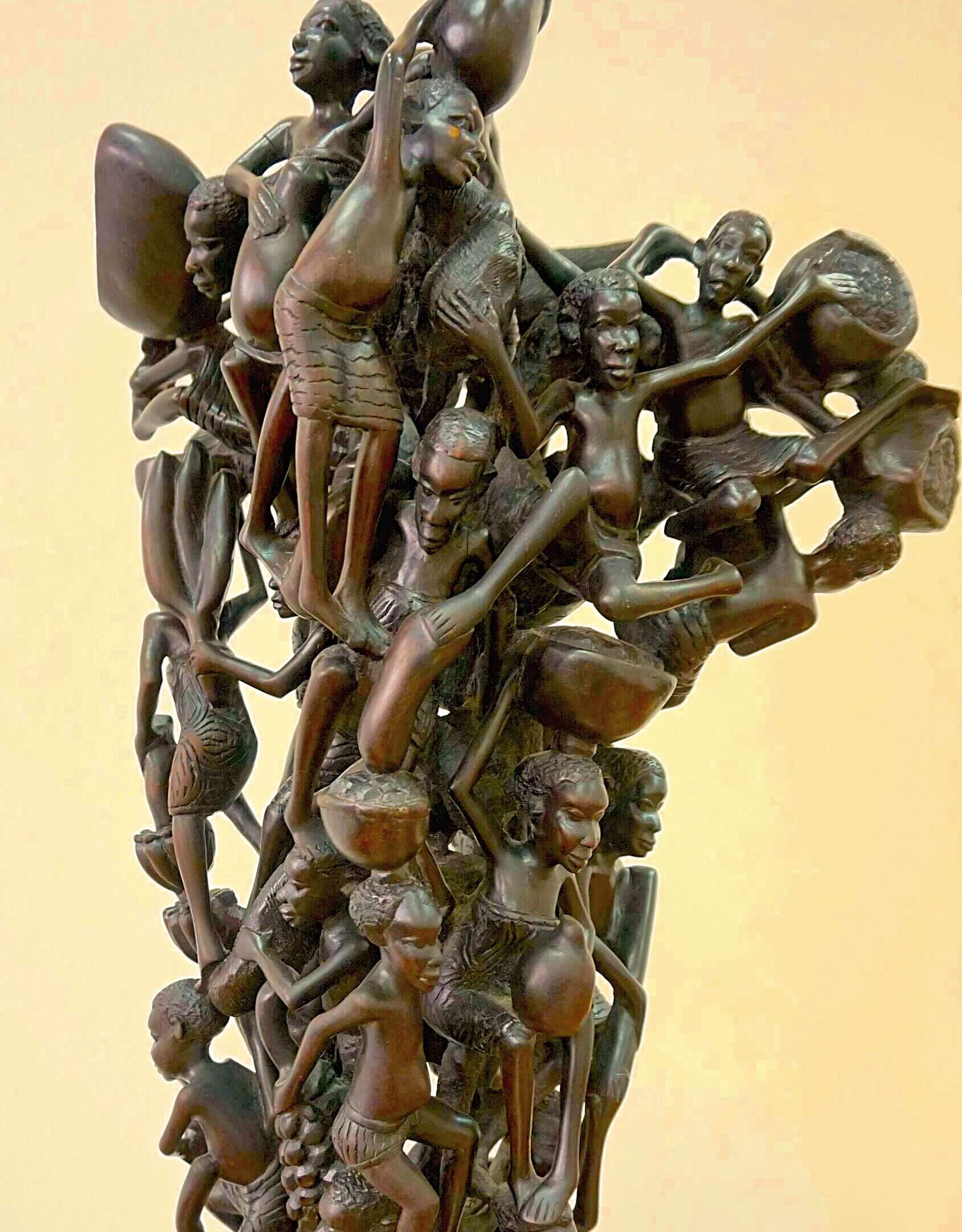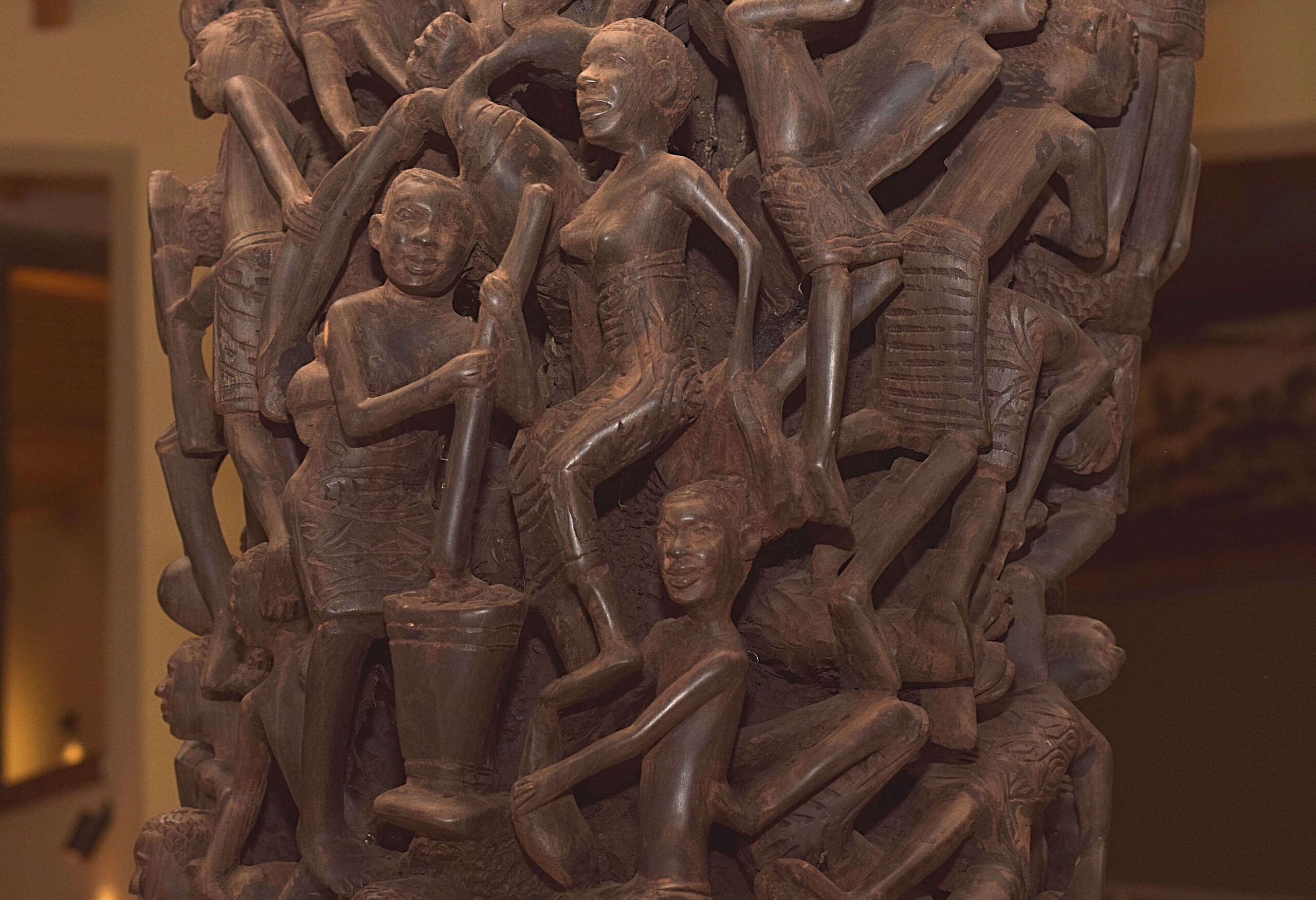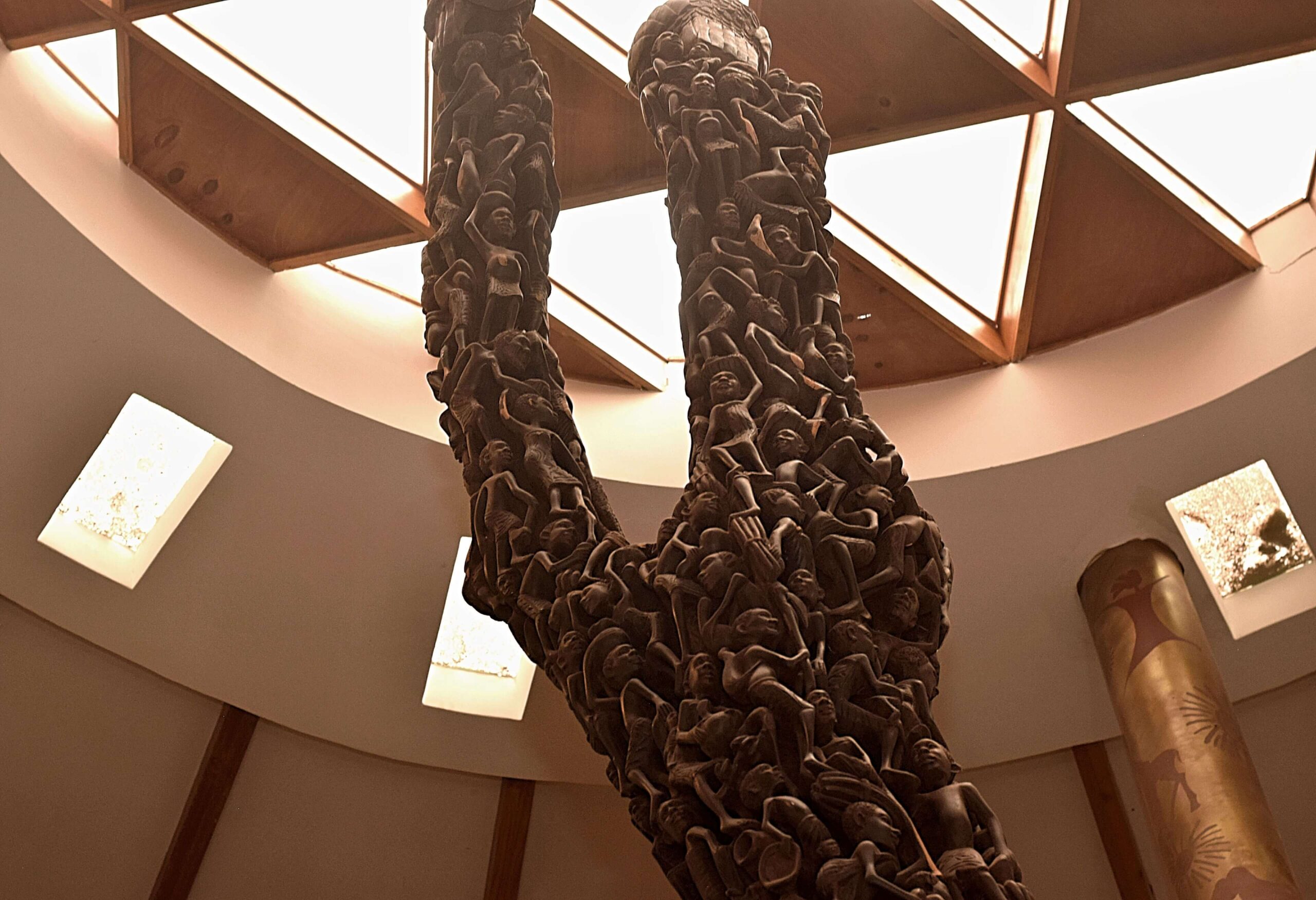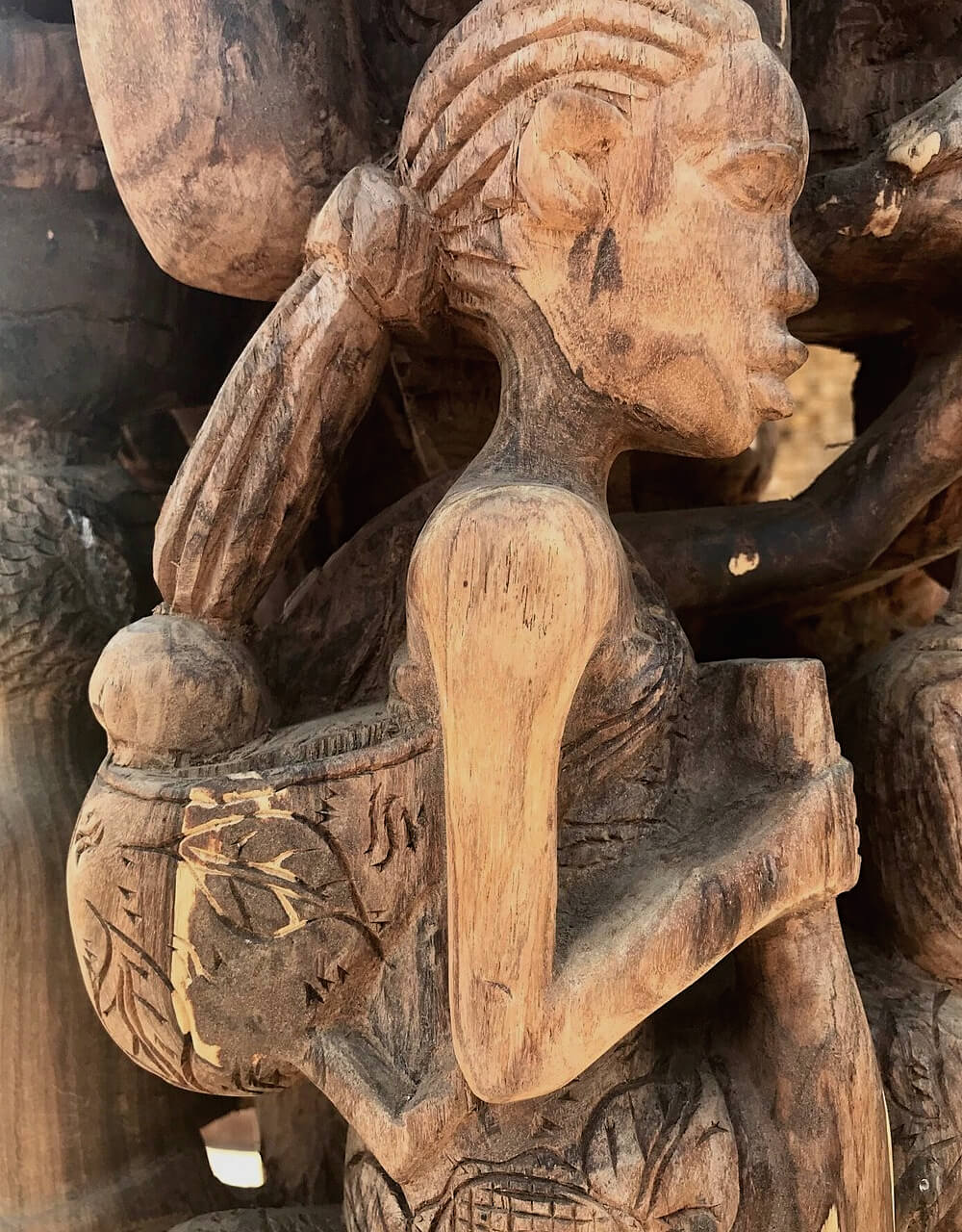EBONY CARVINGS
More on the Makonde Carvings: A Legacy of Wood
The Essence of Makonde Art
The Tree of Life stands at the core of Makonde sculpture, symbolizing the interconnectedness of all living beings. Carved from a singular piece of wood, it features an elaborate combination of interlocking human and animal figures around a central trunk, showcasing the Makonde’s spiritual bond with the natural world. These emblematic pieces embody the Makonde tribe’s reverence for life and the environment, making it a significant cultural and artistic symbol.
Cultural Roots and Influence
The Makonde, residing in Northern Mozambique and the highlands of Southeast Tanzania, are celebrated for their intricate sculptures that depict life, spirituality, and cosmology. Their craftsmanship is a medium through which stories of life, the metaphysical, and their impression of the genesis of mankind are told, reflecting their rich heritage and international acclaim.
The Material: Nature’s Palette
Makonde art is renowned for its use of Ebony hardwood, a material chosen for its layered colors — a striking dark outer bark, a contrasting soft white under layer, and a core that ranges from red to black. This choice of wood, known for its exceptional hardness and durability, is pivotal not just for the visual depth it brings to the sculptures but also for its significance Ebony wood, resilient against the elements, allows for the creation of intricate and lasting works, symbolizing the enduring nature of the Makonde’s cultural heritage.
Tradition and Education Through Art
Makonde carvings are not merely artistic expressions but also serve as vessels for education and the preservation of oral traditions. By depicting scenes of village life, these pieces transmit values, traditions, and the communal wisdom of the Makonde people to younger generations. With no written history, the stories and teachings of ancestors, the spiritual world, and the symbiosis between humans and nature are intricately woven into each carving, capturing the essence of oral narratives through wood.
Community and Craftsmanship
Makonde carving is a communal affair, with artists often gathering in cooperatives beneath large trees to craft their visions. These artisans use what is locally know as mpingo wood (ebony wood), undertaking the laborious task of transforming it into detailed sculptures that narrate Tanzania’s rich tapestry of myths, history, and culture. Crafting a single Tree of Life sculpture is a testament to their dedication, requiring years of patience and skill. An individual carver sometimes works on only four to five pieces in a lifetime. This process highlights the carvers’ perseverance and the deep cultural significance of their work.
Local Makonde Craftsmen
We invite you to visit our Ebony Crafting Workshop, where artists are at work sculpting masterpieces with techniques handed down from generation to generation.


